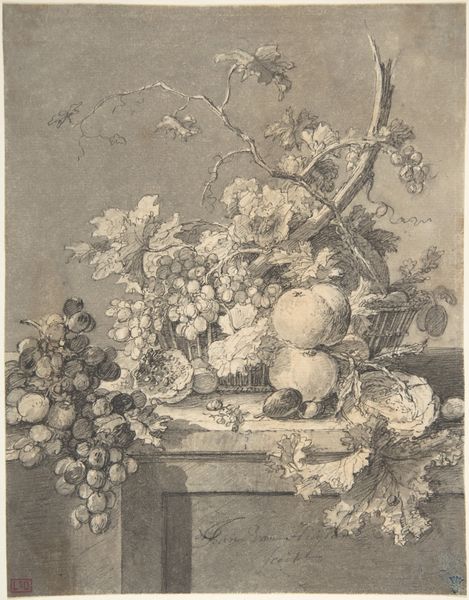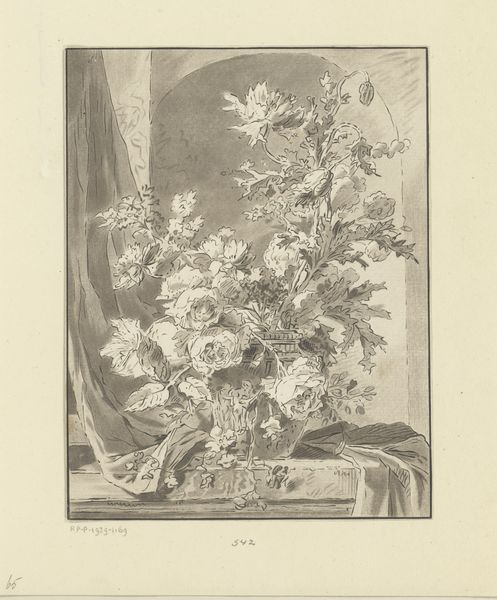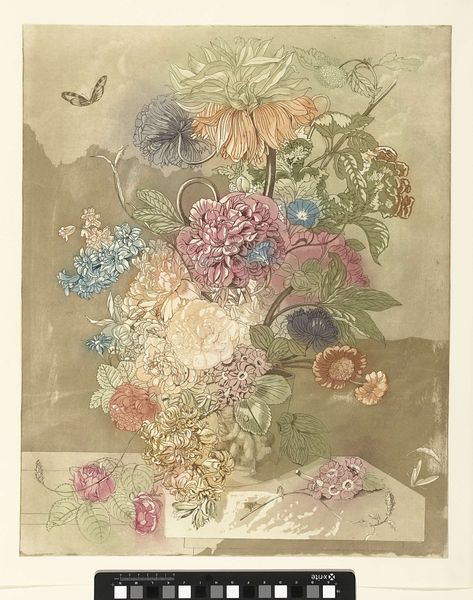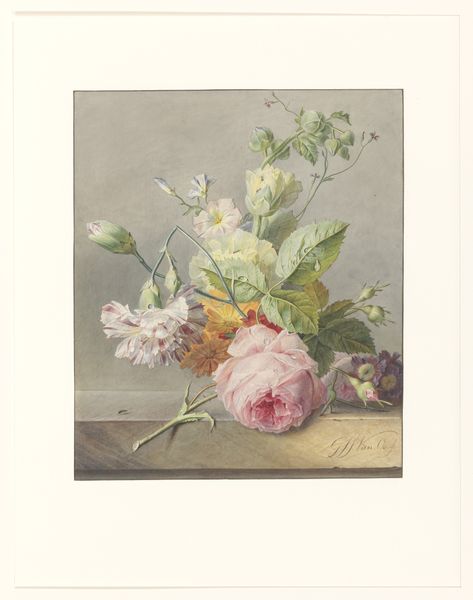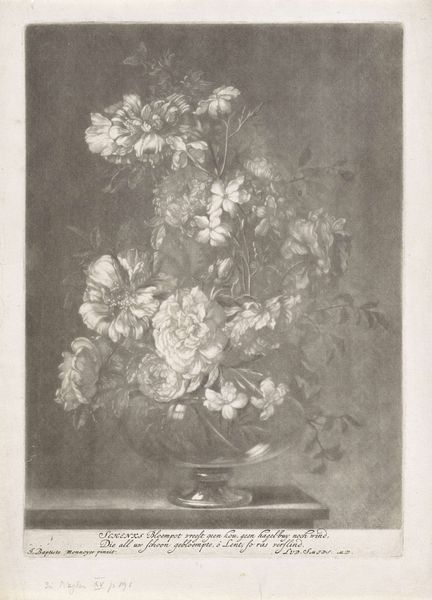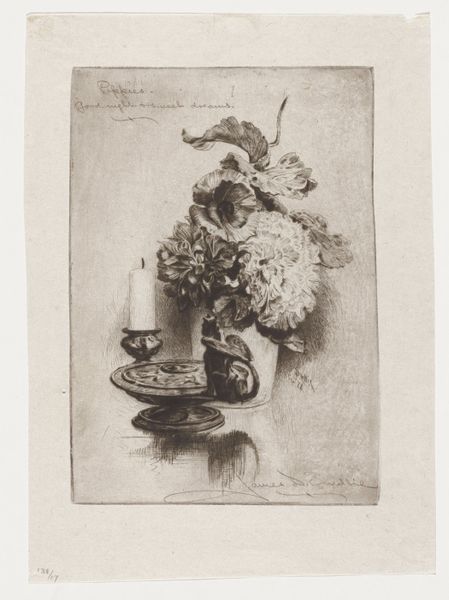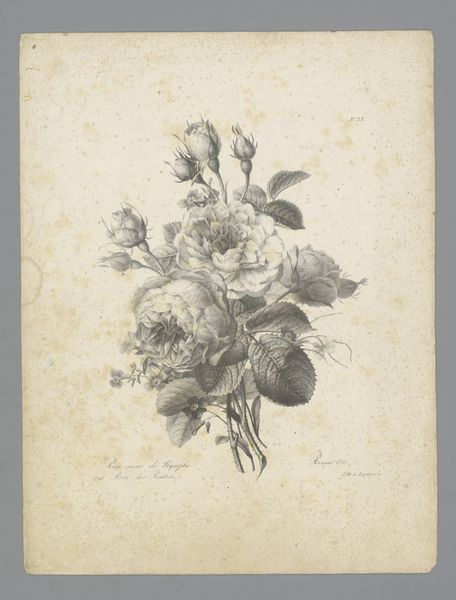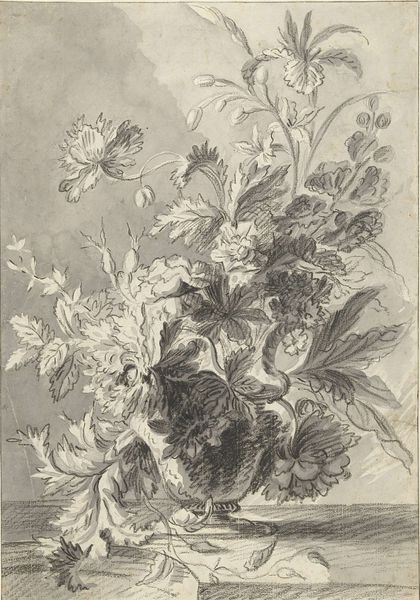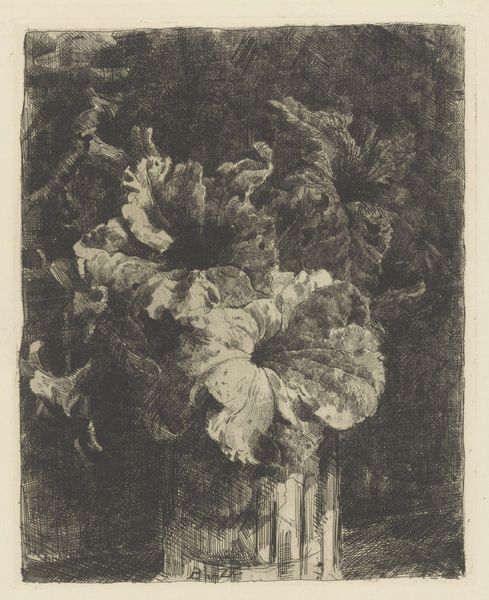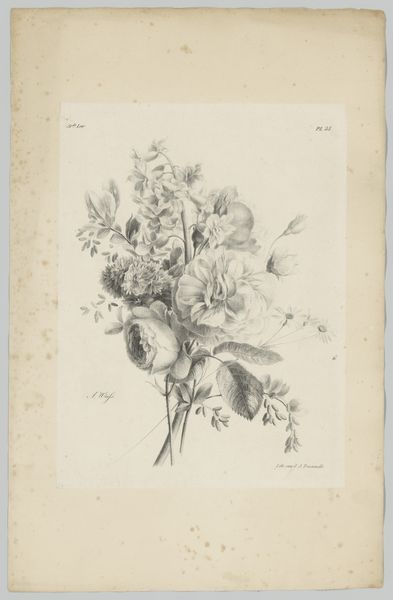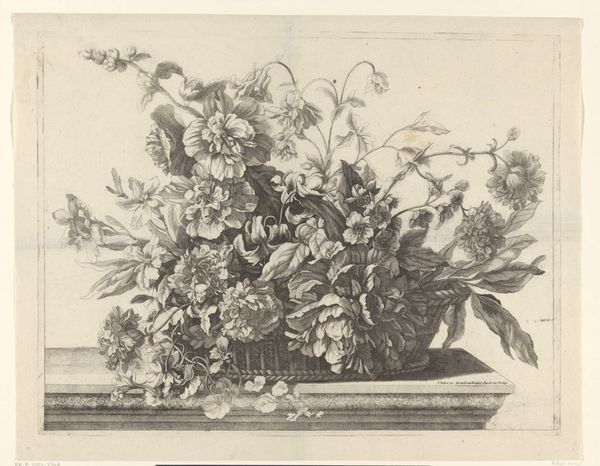
Dimensions: height 207 mm, width 158 mm
Copyright: Rijks Museum: Open Domain
Curator: Here we have a still life drawing, "Mand met vruchten", or "Basket of Fruit," dating from somewhere between 1767 and 1780, made by Bernhard Schreuder. It combines etching and pencil. What's your initial take? Editor: It feels so lush, doesn’t it? The abundance is almost bursting out of the frame. There’s something about the grey scale that emphasizes the textures, making the fruit look incredibly tactile, like you could just reach in and pluck a grape. Curator: Exactly. Considering the printmaking techniques employed here, we can delve into how such images were crucial for disseminating visual culture and knowledge to wider audiences during this period. Editor: Tell me more. I see the fruits of consumerism in there, literally. Curator: The availability of prints meant that middle-class households could access art previously reserved for the elite. Images like this would circulate widely, becoming decorative items but also instructional tools on taste and affluence. Note the basket, its materiality as woven object versus representation, and the social values it projects about nature transformed by labor and status. Editor: And the artist? Schreuder gives us these soft, plump grapes, rendered with so much care... almost like a little ode to decadence. But, there is a slightly melancholic feeling I am also perceiving; this moment of perfect ripeness is fleeting. The drawing seems to understand the cycle of abundance and decay, so the social reading is enhanced, rather than dampened. Curator: I agree entirely. Also, consider the paper quality. Its very existence underlines a world where disposable income enabled investment in not just transient goods like fruit, but lasting—if relatively inexpensive—cultural goods. Editor: It is amazing that the everyday and extraordinary collapse into each other here, then bloom once more through an artist’s perception of form and tone. Thank you, Schreuder, for finding a moment of grace in a piece of fruit! Curator: Indeed. These glimpses into consumption habits from the past reveal much about social aspiration and lived experience, visualized for us today.
Comments
No comments
Be the first to comment and join the conversation on the ultimate creative platform.
